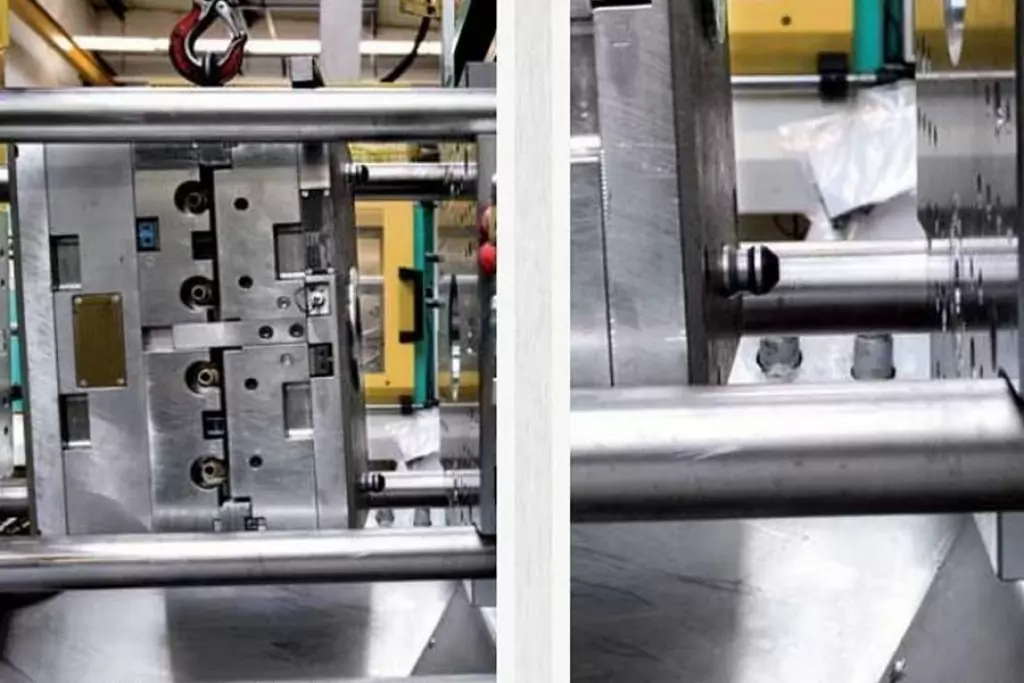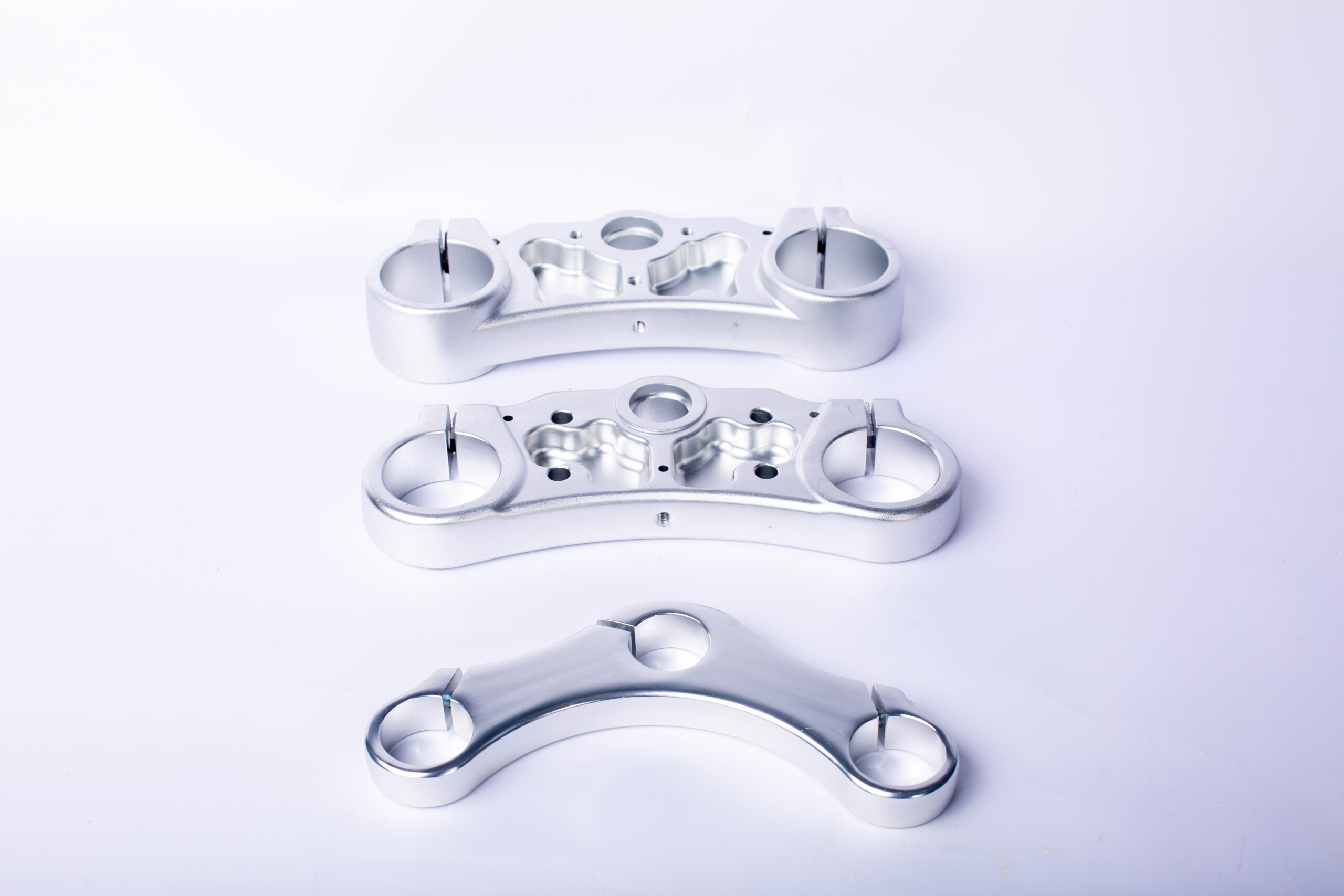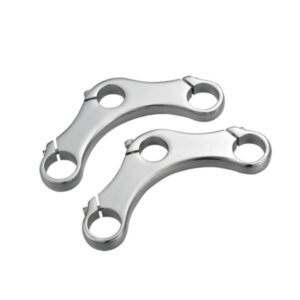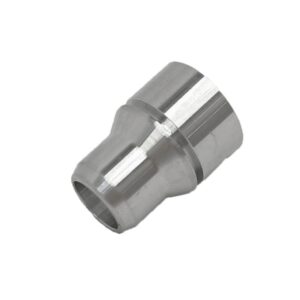MINGYU Tech specialize in the production of a wide range of aluminum forging products to meet the diverse needs of our customers. Our products are widely used in various industries, such as aerospace, automotive, and machinery. Some of our main products include:
- Aluminum Forged Wheels: These wheels are made of high-quality aluminum and are forged to ensure strength and durability. They are widely used in cars, trucks, and other types of vehicles.
- Aluminum Forged Parts: We produce a variety of aluminum forged parts, such as gears, shafts, connecting rods, and more. These parts are made to withstand high pressure and are commonly used in machinery and equipment.
- Aluminum Forged Flanges: Our aluminum forged flanges are widely used in pipelines for oil, gas, and water transmission. They have high strength, excellent corrosion resistance, and can withstand high temperatures and pressures.
At MINGYU Tech , we take quality seriously. We have a strict quality control system in place to ensure that all our products meet the highest standards. We use advanced testing equipment to conduct various tests, including chemical composition, mechanical properties, and dimension accuracy, to ensure that our products are free from defects.
In addition to our standard products, we also offer custom aluminum forging services to meet the specific requirements of our customers. With our experienced engineers and technicians, we can provide tailor-made solutions to meet the unique needs of our clients.

Aluminum forging is a manufacturing process that involves shaping heated aluminum into a desired form through the use of a mechanical press. This process creates durable, high-strength parts that are ideal for a wide range of industries, including automotive, aerospace, and construction. By using specialized dies and high pressure, aluminum forging produces parts with superior strength, fatigue resistance, and surface finish compared to other manufacturing methods. The lightweight nature of aluminum makes it a popular choice for forging, providing strong and efficient components for various applications. With the ability to create complex shapes and intricate designs, aluminum forging offers a cost-effective and reliable solution for producing high-quality and durable components.
Aluminum forging is a manufacturing process that involves shaping aluminum through compressive forces. This process is used to create strong and durable components, making it a popular choice in various industries such as aerospace, automotive, and construction. The process starts with heating the aluminum to a specific temperature and then using a die to apply pressure and shape it into the desired form. This results in a product that has improved strength, structural integrity, and resistance to corrosion. Aluminum forging offers many advantages, such as high precision, cost-effectiveness, and the ability to create complex shapes. Its lightweight nature and high strength-to-weight ratio make it ideal for applications that require both strength and lightweight design. With its versatility and durability, aluminum forging is an essential process in the production of numerous industrial and consumer products.

Aluminum forging is a specialized process that involves shaping aluminum into desired forms through the application of pressure and heat. It is a widely used manufacturing method for creating strong and durable components for a variety of industries, such as aerospace, automotive, and construction. With its unique properties of being lightweight, corrosion-resistant, and high strength, aluminum has become a popular choice for forging applications. In this process, aluminum billets are heated to a specific temperature, placed in a die, and then compressed by a forging press to form the desired shape. This results in a high-quality piece with enhanced mechanical properties and a refined surface finish. Let’s dive deeper into the world of aluminum forging and explore its benefits and applications.
1.What are the key factors to consider when selecting an aluminum alloy for forging?
2.What types of tools and equipment are used in the aluminum forging process?
3.How does the cold working of aluminum affect the final strength and properties of the forged part?
4.Can aluminum be forged at room temperature?
5.Are there any special considerations for forging different grades of aluminum alloys?
6.How is the grain structure of aluminum controlled through the forging process?
1.What are the key factors to consider when selecting an aluminum alloy for forging?
1. Strength and Hardness: The strength and hardness of the aluminum alloy are important factors to consider as they determine the load-bearing capacity and resistance to deformation during the forging process.
- Ductility: Ductility refers to the ability of the alloy to deform without breaking. A high level of ductility is desirable for forging as it allows for easier shaping and reduces the risk of cracking.
- Heat Treatment: Some aluminum alloys can be heat treated to improve their mechanical properties, such as strength and hardness. Consider the heat treatment options available for the alloy and whether they are suitable for the intended application.
- Corrosion Resistance: Depending on the application, the aluminum alloy may be exposed to corrosive environments. It is important to select an alloy with good corrosion resistance to ensure the longevity of the forged product.
- Machinability: The machinability of the alloy is an important consideration if the forged product will require further machining. Some alloys are more difficult to machine than others, which can affect the overall production time and cost.
- Cost: The cost of the aluminum alloy should also be taken into account, as it can vary significantly depending on the composition and availability of the alloy.
- Application: The intended application of the forged product will also play a role in selecting the appropriate aluminum alloy. Different alloys have different properties and are better suited for specific applications, such as automotive, aerospace, or construction.
- Availability: Consider the availability of the alloy and whether it can be easily sourced from suppliers. This is especially important for large-scale production.
- Compatibility with Other Materials: If the forged product will be used in conjunction with other materials, it is important to consider the compatibility of the aluminum alloy with these materials to avoid any potential issues.
- Quality and Certification: Ensure that the aluminum alloy meets the necessary quality standards and has the required certifications for the intended application. This will ensure the safety and reliability of the forged product.
2.What types of tools and equipment are used in the aluminum forging process?
1. Forging Hammer: A heavy-duty hammer used to shape and deform the aluminum material.
Forging Press: A machine that applies pressure to the aluminum material to shape it into the desired form.
Die: A specialized tool used to shape the aluminum material into a specific form.
Furnace: A high-temperature oven used to heat the aluminum material to its forging temperature.
Tongs: A tool used to hold and manipulate the hot aluminum material during the forging process.
Anvil: A heavy block of metal used as a base for the forging process.
Swage Block: A multi-purpose tool used to shape and form the aluminum material.
Chisel: A sharp tool used to cut and shape the aluminum material.
Mandrel: A cylindrical tool used to shape the inside of the aluminum material.
Sledgehammer: A heavy hammer used to shape and deform larger pieces of aluminum.
Hydraulic Press: A machine that uses hydraulic pressure to shape and deform the aluminum material.
Rolling Mill: A machine used to flatten and shape the aluminum material into thinner sheets.
Shears: A cutting tool used to cut the aluminum material into smaller pieces.
Sandblaster: A tool used to clean and prepare the surface of the aluminum material before forging.
Heat Treatment Equipment: Various equipment used to heat treat the aluminum material after forging to improve its strength and durability.
3.How does the cold working of aluminum affect the final strength and properties of the forged part?
Cold working, also known as cold forging or cold forming, is a process in which a metal is shaped and formed at room temperature. This process involves applying pressure to the metal, causing it to deform and take on a new shape. In the case of aluminum, cold working can have a significant impact on the final strength and properties of the forged part.
Increased Strength: One of the main effects of cold working on aluminum is an increase in strength. This is because the process of cold working causes the metal to undergo plastic deformation, which results in the formation of dislocations within the crystal structure of the metal. These dislocations act as barriers to the movement of other dislocations, making it more difficult for the metal to deform further. As a result, the metal becomes stronger and more resistant to deformation.
Improved Ductility: While cold working can increase the strength of aluminum, it can also improve its ductility. Ductility refers to the ability of a metal to deform without breaking. When aluminum is cold worked, the dislocations that are formed also act as sites for the absorption of energy, making the metal more ductile. This means that the forged part will be able to withstand more stress and strain without fracturing.
Grain Refinement: Another effect of cold working on aluminum is grain refinement. During the process of cold working, the metal is subjected to compressive forces, which cause the grains within the metal to deform and elongate. This results in a finer grain structure, which can improve the mechanical properties of the metal, such as strength and toughness.
Residual Stresses: Cold working can also introduce residual stresses into the aluminum. These are internal stresses that remain in the metal even after the deformation process is complete. These stresses can affect the final properties of the forged part, as they can cause the metal to deform or fail under certain conditions.
In conclusion, the cold working of aluminum can have a significant impact on the final strength and properties of the forged part. It can increase the strength and ductility of the metal, improve its grain structure, and introduce residual stresses. Therefore, it is important to carefully consider the effects of cold working when designing and manufacturing forged aluminum parts.
4.Can aluminum be forged at room temperature?
No, aluminum cannot be forged at room temperature. Forging is a process that involves shaping and compressing metal at high temperatures, typically above 700°C (1300°F). At room temperature, aluminum is too brittle and hard to be forged effectively. It requires high temperatures to become malleable and easily shaped.
5.Are there any special considerations for forging different grades of aluminum alloys?
Yes, there are several special considerations for forging different grades of aluminum alloys, including:
- Temperature control: Different grades of aluminum alloys have different melting points and forging temperatures. It is important to maintain precise temperature control during the forging process to ensure the desired mechanical properties and microstructure of the final product.
- Deformation behavior: Different grades of aluminum alloys have different deformation behaviors, which can affect the forging process. Some alloys may require higher forging pressures or longer forging times to achieve the desired shape and properties.
- Workability: Some aluminum alloys are more workable than others, meaning they can be forged at lower temperatures and with less force. This can affect the overall efficiency and cost of the forging process.
- Heat treatment: Some aluminum alloys require heat treatment after forging to achieve the desired strength and hardness. The specific heat treatment process will vary depending on the grade of alloy being forged.
- Die design: The design of the forging die must be carefully considered for each grade of aluminum alloy. Different alloys have different flow characteristics and may require different die designs to achieve the desired shape and properties.
- Surface finish: Some aluminum alloys are more prone to surface defects during forging, such as cracking or tearing. Special care must be taken to ensure a smooth surface finish for these alloys.
- Tooling and equipment: Different grades of aluminum alloys may require different tooling and equipment for forging. For example, some alloys may require specialized lubricants or coatings to prevent sticking or galling during forging.
- Post-forging processing: Depending on the grade of aluminum alloy, additional processing steps such as machining, polishing, or anodizing may be required after forging to achieve the desired final product.

6.How is the grain structure of aluminum controlled through the forging process?
The grain structure of aluminum can be controlled through the forging process by manipulating the temperature, strain rate, and deformation rate during the forging process. This is known as thermomechanical processing.
Temperature: The temperature at which the aluminum is forged plays a crucial role in controlling the grain structure. Higher temperatures promote grain growth, resulting in larger grains, while lower temperatures promote finer grains. By carefully controlling the temperature, the desired grain size can be achieved.
Strain rate: The strain rate, or the rate at which the aluminum is deformed during forging, also affects the grain structure. Higher strain rates result in smaller grains, while lower strain rates result in larger grains. This is because higher strain rates promote more deformation and break up the existing grains, resulting in finer grains.
Deformation rate: The deformation rate, or the rate at which the aluminum is compressed during forging, also plays a role in controlling the grain structure. A higher deformation rate results in more deformation and break up of the existing grains, resulting in finer grains.
Die design: The design of the forging die can also influence the grain structure. A die with a complex shape or sharp corners can cause localized deformation and result in a non-uniform grain structure. Therefore, the die design should be optimized to promote uniform deformation and grain structure.
Heat treatment: After forging, the aluminum can be subjected to a heat treatment process to further refine the grain structure. This involves heating the aluminum to a specific temperature and then cooling it at a controlled rate. This process helps to break up any remaining coarse grains and promote a more uniform and fine-grained structure.
Overall, by carefully controlling the temperature, strain rate, deformation rate, die design, and heat treatment, the grain structure of aluminum can be controlled and optimized for the desired mechanical properties.




